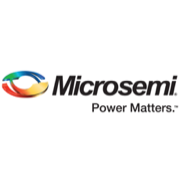Lowest power sub-GHz RF transceiver for secure IoT applications
24-02-2016 | MicroSemi | Semiconductors
Microsemi has unveiled the ZL70550, an extremely low-power new sub-GHz radio
frequency (RF) transceiver for industrial, security and medical
applications.
In addition to its best-in-class low power characteristics, the new ZL70550
combines high performance wireless capability, a high level of integration
and an extremely small footprint at competitive pricing. The ZL70550 is
well-suited to wireless applications operating on coin-cell batteries or
energy harvesters, such as electronic shelf labels, retail asset tracking,
process control, wearable monitoring, medical diagnostics and ECG.
With annual chipset volumes reaching 450 million in 2015, the wireless
sensor market is experiencing 'hypergrowth' according to On World Inc.'s
recent market study. Although this market is dominated by Wi-Fi, Bluetooth
and Zigbee solutions, many applications require much lower power
characteristics in order to operate for years on very small batteries, says
the company.
"Many medical and industrial customers have applications where changing the
battery is a complex and expensive operation that often exceeds the cost of
the system itself," said Francois Pelletier, product line director,
Microsemi. "By leveraging the same intellectual property we have
successfully developed for implantable pacemakers and hearing aids where
power consumption cannot be compromised, we are able to provide the lowest
power wireless link in an extremely small form factor that is easy to
deploy."
Operating in the 779-965 megahertz (MHz) unlicensed industrial, scientific
and medical (ISM) frequency bands, the ZL70550 consumes only 2.8 milliamps
(mA) while transmitting at -10 decibel-milliwatts (dBm) output power and a
similar 2.5 mA during reception. It offers the industry's lowest sleep state
current of 10 nanoamperes (nA), making it ideal for low-duty cycle
applications. As a flexible solution that can be tailored to various
application requirements, the ZL70550 operates between 1.7 volts (V) to 3.6
V and offers variable output power and data rates up to 200 kilobits per
second (kbps). For applications that require extended wireless range, the
transmitter output power, receiver input sensitivity and data rate can be
adjusted to give a link budget up to -107 dBm while minimally increasing the
power consumption of the device.
"Working with the Microsemi team to implement its ZL70550 into our medical
devices has been groundbreaking, as the product's extremely low power, RF
input sensitivity and small size provide the optimal solution for our
specific needs," said John Walmsley, vice president product development at
Starfish Medical in Victoria, B.C. "We are leveraging the unique
capabilities of this solution to ensure successful deployment of our latest
innovations, and we look forward to future advancements from Microsemi as
Starfish Medical continues to create breakthrough products for a number of
medical specialty areas."
The ZL70550 is highly integrated and offered in a very small 3mm x 2mm chip
scale package. Other than the antenna and, in some cases, its matching
network, only a crystal, resistor and two coupling capacitors are required.
The device includes an advanced media access controller (MAC) that performs
most link support functions, received signal strength indications (RSSI),
clear channel assessment, Sniff, preamble and synchronization,
packetization, whitening and forward error correction (FEC). The Microsemi
optional Z-Star protocol enables rapid product development and offers a full
star configuration to allow a full network to be deployed.
Also, Microsemi offers a wireless sensor network (WSN) evaluation kit and an
application development kit (ADK) to ease and accelerate hardware and
software development. The evaluation kit includes one USB hub and one
accelerometer sensor node and demonstrates a wireless sensor network
application using the ZL70550's built-in Z-Star protocol. The ADK provides
all the necessary hardware and software to demonstrate the performance of
the ZL70550 and is intended to be used as a tool to support prototype
development.



